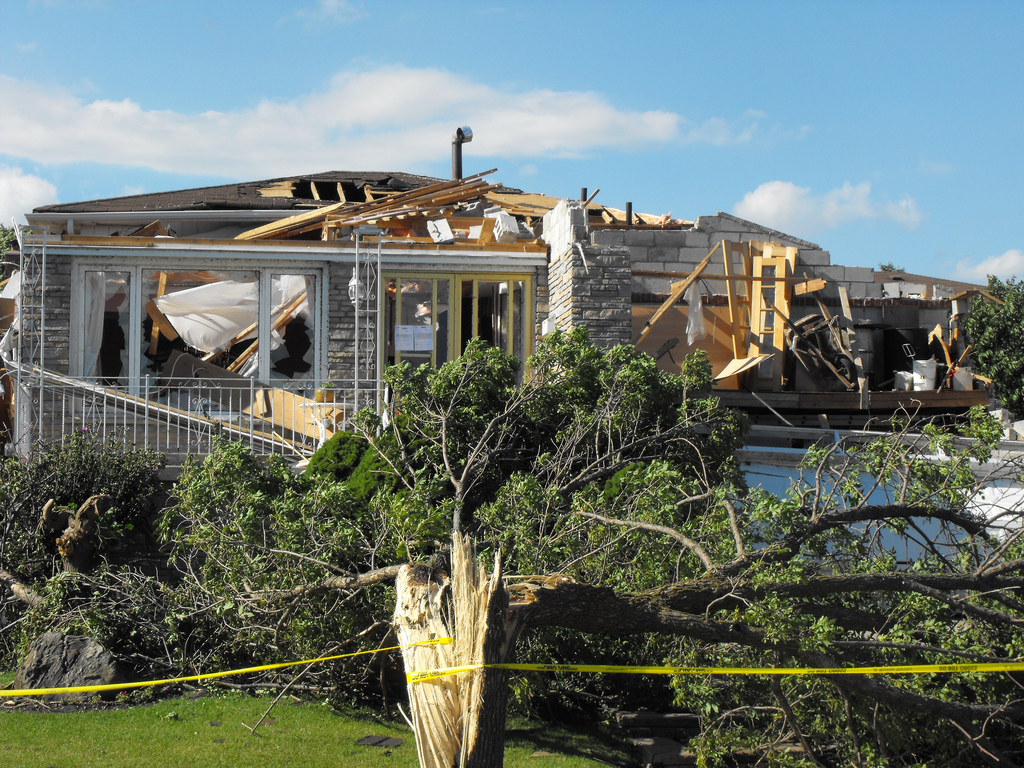As tornadoes tore through parts of north Texas on Monday night, it served as a reminder that summer season and its extreme weather occurrences, is almost upon us. Even in Canada.

While Canada doesn’t have as many tornadoes as the United States, it is still a dangerous time of year.
Each spring and summer, Geoff Coulson, Weather Preparedness Meteorologist with Environment Canada, trains CANWARN (Canadian Weather Amateur Radio Network) severe storm spotters. These are amateur radio operators and weather enthusiasts who are taught to recognize the signs of impending severe weather. They learn how to identify clouds, what to do in the event of severe weather, and how to report severe weather to Environment Canada.
“It’s about summer severe safety,” said Coulson.
You don’t need to be an amateur radio operator to join the group. The people who join are ordinary citizens who share an interest in weather. These people aren’t storm chasers, but rather people interested in communicating severe weather to the public. It’s about being the eyes and ears for Environment Canada.
Although Environment Canada has sophisticated radar and satellite systems designed to forecast storms, they can’t see what’s on the ground. This is where CANWARN spotters come in. The information they provide is called “ground-truthing.”
Ward Kennedy volunteers as the co-ordinator for CANWARN in south-central Ontario. “I enjoy getting the information to Environment Canada,” he said. He also stressed how important it is to get the safety message out to the public who may not realize what impending severe weather look like.
There are about 4,000 trained spotters in Ontario. In Alberta, Saskatchewan and Manitoba there is a database of 5,000. “The more people aware of the situation, the better, because then they’ll know what to do,” Kennedy said.
Although Ontario has its own “tornado alley” that runs from Windsor up through to eastern Ontario, it has a small percentage of Canada’s annual tornadoes. The Prairies get an average of 43 tornadoes a year. The most powerful tornado in Canada – an EF5 on the newly introduced Enhanced Fujita scale, which ranges from EF0 to EF5 – struck Elie, Manitoba, in 2007. Incredibly, no one was killed. On July 31, 1987, a tornado tore through Edmonton, Alberta, killing 27 people.
Some of the most damaging – and costly – events in the Prairies have been hail storms. Each year the Prairies received 130 severe hail events. This costs farmers and insurance companies millions of dollars a year.
Stephen Mayne has been a CANWARN member since 2001. He became interested after a small gustnado (similar to a tornado, but ground-based) destroyed a barn behind his house. Asked if he had become obsessed with weather, Mayne responded, “Obsessed? Maybe. But most certainly fascinated by it.
“I love weather and know its beauty and dangers. If what we do makes a difference for one person, it is worth it,” Mayne said. “CANWARN is performing a service to a large number of people and adds to the accuracy of Environment Canada, which in turn allows for better, more accurate reporting during and after severe weather events.”
Because Canada is so large and a so much of it has a scattered population, meteorologists suspect that many tornadoes go unreported each year. Models show that, although an average of about 80 tornadoes are reported each year, the reality is that there are more likely 230 a year. The United States averages about 1000 annually.
“But the majority of weather events are downbursts, hail and flash floods,” Coulson pointed out. Downbursts, straight-line winds and microbursts all involve strong, damaging and dangerous winds. People often mistake the damage they cause as evidence of a tornado (Environment Canada only confirms a tornado after a damage survey is conducted). Even if it’s not a tornado, these are all potentially deadly events. What is important, is getting warnings out to the public about them in order to get people to seek shelter. “It’s about having additional information from people who know what to look for, to give longer lead times.”
These lead times would help Environment Canada issue earlier weather warnings and watches.
One of the most important tools that Coulson recommends is a Weatheradio. This programmable portable radio issues weather watches and warnings for your area. Coulson particularly stresses that cottagers and boaters have one. But that doesn’t mean if you live in an urban area that you don’t need one. Coulson believes that people living in urban areas often forget about Mother Nature, something that could be costly.
Environment Canada is stressing that everyone have a Weatheradio. In 2011, 14,000 schools and scout and guide camps across Canada were given Weatheradios.
What is most important to Coulson is that people are prepared for any severe weather, be it winds, floods, tornadoes or lightning. “Be aware of your surroundings,” he said.
“Keep an eye on the sky.”
—
To learn more about summer severe weather visit Environment Canada’s website.





Comments